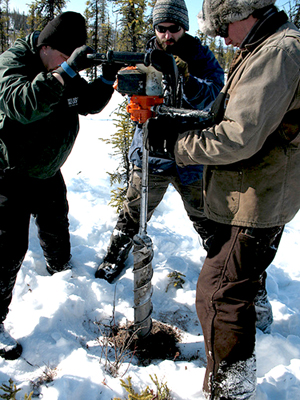Permafrost soils found at the poles are particularly vulnerable to climate change because the average annual temperature at these sites is at or just below the freezing point of water. Therefore, even a small increase in local warming can have large melting consequences. This is particularly troubling because permafrost is a large carbon reservoir. The stored carbon in permafrost is a highly vulnerable because thawing can release large amounts of methane and carbon dioxide, and methane has 23 times more of an effect on climate change than carbon dioxide.
Microorganisms in permafrost soil are largely responsible for cycling the carbon that is currently trapped, and they are the key players in methane production. As the permafrost thaws, the trapped organic matter becomes accessible for microbes to degrade, releasing greenhouse gases as a byproduct. Therefore, knowledge of microbial carbon cycling processes is crucial for understanding and eventually reducing negative global impacts due to thawing of permafrost soils. However, little is currently known about the identities of microorganisms in permafrost soils or their functions. Sequencing will provide the first deep metagenomic analysis of permafrost soil communities that are undergoing change. As this metagenomic data is tied to a large global change research effort, it could be one of the first studies of its kind to link genomes to large scale climate change in northern ecosystems.

Photo: USGS Soil Carbon Research
Principal Investigators: Mark Waldrop, US Geological Services
Program: CSP 2010